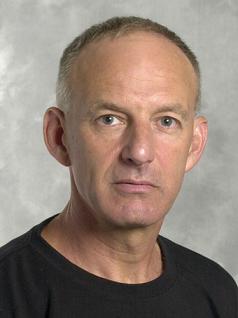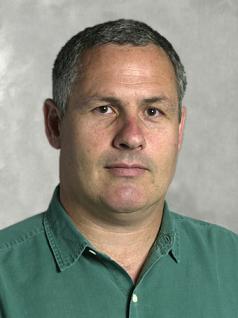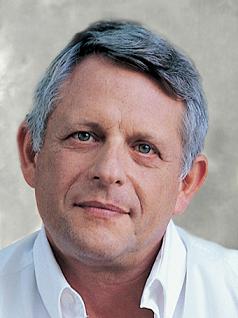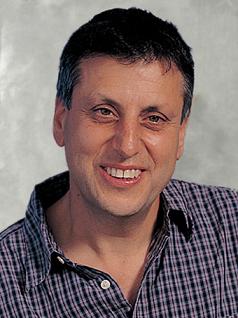The Weizmann Institute is currently working on three research directions in the field of alternative energy. Ideas and experiments which perhaps, most days, will lead to advanced applications
The global energy crisis poses a significant challenge to scientists in Israel and around the world. It is impossible to exaggerate the importance of efforts to find effective substitutes for oil, whose production and consumption processes will be environmentally friendly. Weizmann Institute scientists work on this front in several directions.
Look for the acceleration

Prof. Uri Peak and Prof. Avihai Danon
In the process of searching for biological sources of fuel, quite a few scientists turned to corn plants and sugar cane, from which ethanol can be produced (as is already done in the USA and Brazil). The disadvantage of using these plants stems, among other things, from the large quantities of petroleum products required to grow them. In addition to this, using large areas to grow corn and sugar cane to produce fuel is already raising food prices. Fuels produced from soy and canola plants provide a negligible amount of demand in Europe. In Brazil, Malaysia and Indonesia, the forests are being cut down to turn them into growing areas for bio-fuels, thus potentially accelerating global warming. Therefore, Weizmann Institute scientists believe that a more effective and viable alternative may be found in oceans, lakes, and even in puddles of stagnant water: algae.
Algae has several advantages compared to other "fuel plants". First, it is possible to grow them in areas that are not suitable for growing edible plants, and to irrigate them in relatively salty water, which is not suitable for drinking, and even in sea water. Second, they grow quickly and you can "harvest" them throughout the year. Thirdly, their use leaves no waste - the algae parts that are not used to produce fuel can be used for other uses, such as animal feed. Algae plantations can be placed near power plants, so that they absorb a significant part of the carbon dioxide emitted in the electricity production process. This is how energy can be produced in a green and environmentally friendly process.

To all of these must be added the fact that from some varieties of algae it is possible to produce oil in an amount equal to half of the raw material. "This oil," says Prof. Avihai Danon from the Department of Plant Sciences at the Weizmann Institute of Science, "can be easily squeezed and converted into biofuel. Already today, this fuel can be used in diesel engines, without a large investment in adapting the engines to the new fuel." Producing biofuel from algae is at least 30 times more efficient than producing fuel from other field crops. This fact led Prof. Danon, and Prof. Uri Pick from the department of biological chemistry at the institute, to a joint research aimed at creating strains of algae that would be especially suitable for the production of oil that can be converted into biofuel. In the first step, the scientists try to understand how and when the algae create the oil. Like green plants, algae absorb energy from the sun and convert it into sugars or oils, which they store for when needed.
Of course, the amount of energy that a single cell - single-cell production - can absorb is quite limited. In fact, too much sunlight can overload the accelerator systems, speeding up the production of free radicals that can damage or even kill the cell. Because of this limitation, the cell must decide where to invest its limited energy: in growth (in reproduction), or in oil production. It's a cruel choice, and if you want to make the algae produce more oil, you have to thoroughly understand the factors that influence the algae's "decision-making" process.
The scientists work with several varieties of algae, which have different properties that allow them to grow in different conditions. They are developing new tools to identify the genes that control the metabolism in algae and to compare them, and especially the substances responsible for the decisions whether to accumulate oil or reproduce, whether to absorb solar energy or block it. "Once we identify the genes involved in the process, and understand their roles, we will be able to develop ways that will allow us to control the decision-making processes of the algae," says Prof. Danon. "In this way, we hope to create algae strains that will be an effective source for producing environmentally friendly fuel."
Yes, disassemble

Prof. Ed Bayer
One of the obstacles to the production of biofuels from many organic materials, such as agricultural waste, is the cellulose (cellulose) they contain. Cellulose is found in the barks of many plants and it does not break down easily. Man, for example, is unable to digest cellulose, which is a polysaccharide that may provide a lot of energy. Prof. Ed Bayer, from the Department of Biological Chemistry, studies bacteria that break down the chain of cellulose sugar molecules into monosaccharide units that feed them. In the 80s of the last century, in collaboration with Prof. Raphael Lemmed from Tel Aviv University, Prof. Bayer discovered how the "machine" works that allows bacteria to break down cellulose. "This machine, called cellulose, is made up of a group of enzymes that work as a team, and that's how they manage to overcome the cellulose and break it down into its components, a job that creatures much larger than bacteria are unable to perform." Cellulose makes up about half of the material in waste sites. The bulk of this waste is paper, which piles up and accumulates year after year. Unfortunately, bacteria equipped with cellulosomes, which allow them to digest and break down natural cellulose, have difficulty dealing with the cellulose in industrial paper.
To enable them to perform this task, Prof. Bayer began looking for ways to perfect the cellulosomes of the bacteria. Together with Prof. Lemmed, he used methods of genetic engineering to create hundreds of different versions of cellulosomes, hoping that one of them would be characterized by the ability to break down the cellulose in paper with sufficient efficiency. At this point they were joined by Prof. Gideon Schreiber, an expert in protein design and matching their activity, from the Department of Biological Chemistry at the Weizmann Institute of Science. Working together, the institute's scientists succeeded in developing an artificial cellulose with increased activity, which is capable of turning a laboratory plate full of shredded paper into a liquid of simple sugar molecules within one day. The simple sugars that are formed in this process can be converted into ethanol. These days, scientists are trying to increase the efficiency of this process, so that it can be operated on an industrial scale. Success in this field may lead, in the future, to the development of a process of turning paper waste, which is an environmental threat, into an efficient and environmentally friendly fuel.
Natural selection

Prof. Dan Tofik
If algae and bacteria can be engineered to create biofuels, will it be possible to make them produce hydrogen, which is considered the fuel of the future? Hydrogen may be the cleanest fuel of all, as the byproduct of its combustion is water. But most of the methods that exist today to create hydrogen involve the use of fossil fuels (oil and coal).
A group of scientists from France, Spain, Sweden, England, Portugal and Israel, which includes Prof. Dan Toufik from the Department of Biological Chemistry at the Weizmann Institute of Science (for more work by Prof. Toufik, see page 16 of this issue), is investigating the possibility of creating a bacterium that will produce hydrogen cleanly And economically worthwhile. They began to examine bacteria called "cyanobacteria" (which in the past were sometimes called "blue-green algae", despite the fact that they are not algae). These single-celled photosynthetic creatures have a long history of producing substances essential to humans. They were among the first creatures to release oxygen into the Earth's atmosphere (which paved the way for the evolution of oxygen-breathing animals), and some of them hold nitrogen in the soil so that plants such as rice can utilize it.
The researchers intend to use a pioneering approach to develop the new bacteria. Instead of changing the activity of a gene or two to maximize performance, they want to engineer a whole new set of biological components that will be specifically designed to fit the desired functions. One of the methods the scientists will use to achieve this goal is a method for the rapid evolution of enzymes, in vitro, developed by Prof. Toufik.
Five facts about the energy crisis
- The demand for energy has been increasing in recent years, mainly due to the rising standard of living in the third world, and especially in China and India.
- The World Energy Organization predicts that if these demand patterns continue, energy demand will increase by about 60% by 2030.
- The sources of oil are running out, and the price of political dependence on the oil countries endangers world peace and Israel's security.
- The continued increase in the price of oil threatens the stability of the global economy.
- Burning fossil fuels causes air pollution and increases the emission rates of greenhouse gases accumulated in the atmosphere, which may worsen global warming.

One response
SYSCON ENGINEERING
6/9 KAM AVE. POB. 1241 RAMAT-GAN ISRAEL 52112
TEL: 972-3-6779910. FAX: 972-3-6770545 liberm@bezequint.net
A Sea-Wave powered desalination and/or electrical power generation.
" SWEDEN "
System / process cuts operational costs by 50%.
Annual water production capacities 5-50 Mm3 of Pure-Water.
Annual electricity production capacities 20-200 MkWh
Ready for serial production.
Searching for strategic Investor / Partner
The project is "huge" on an international scale